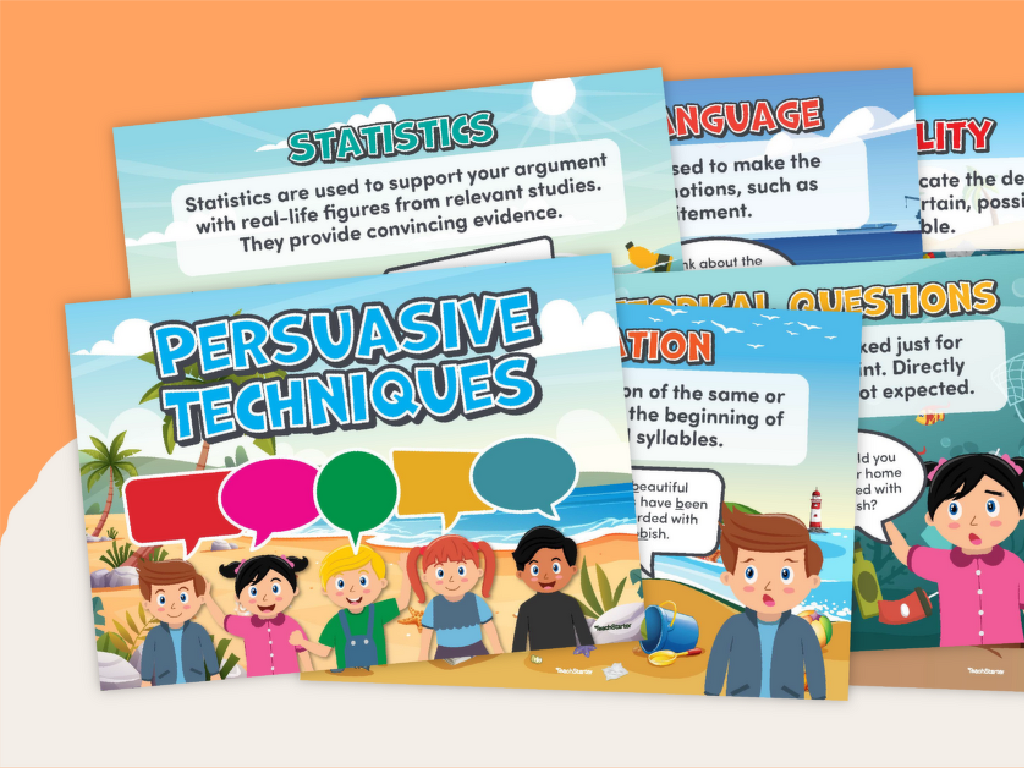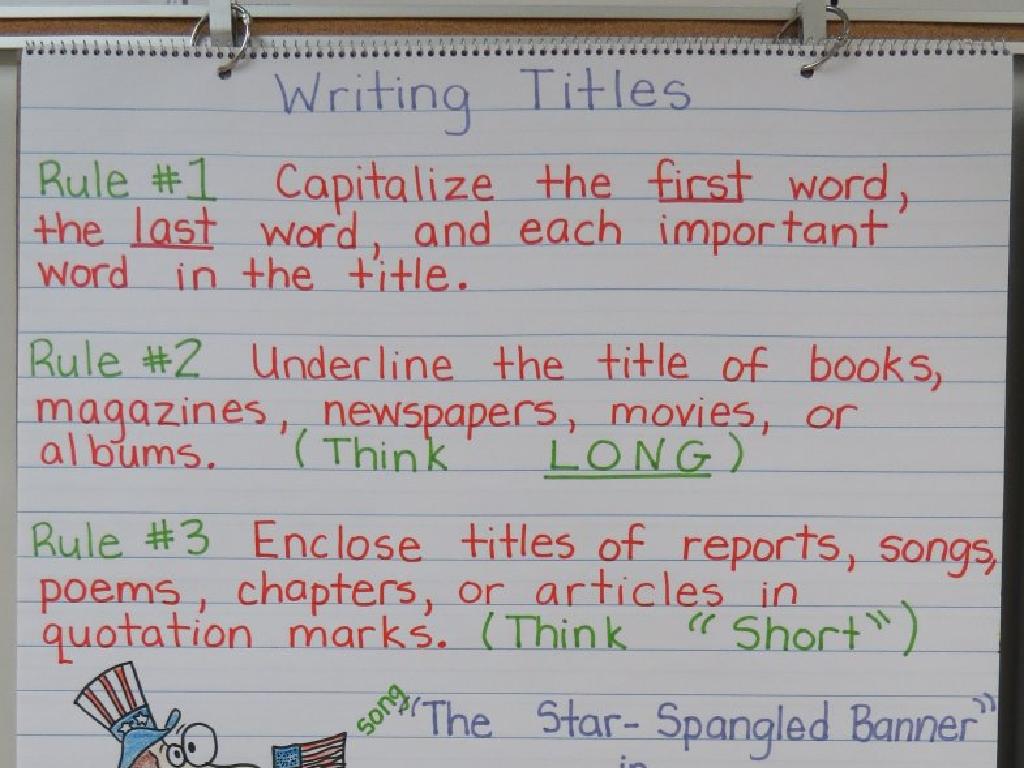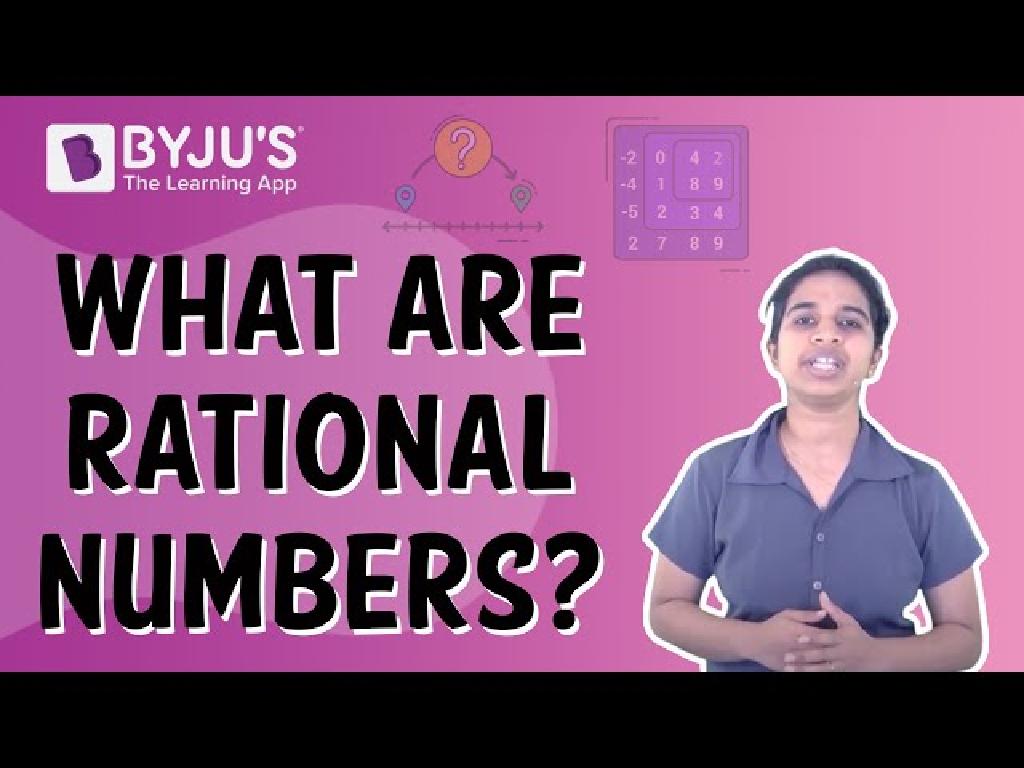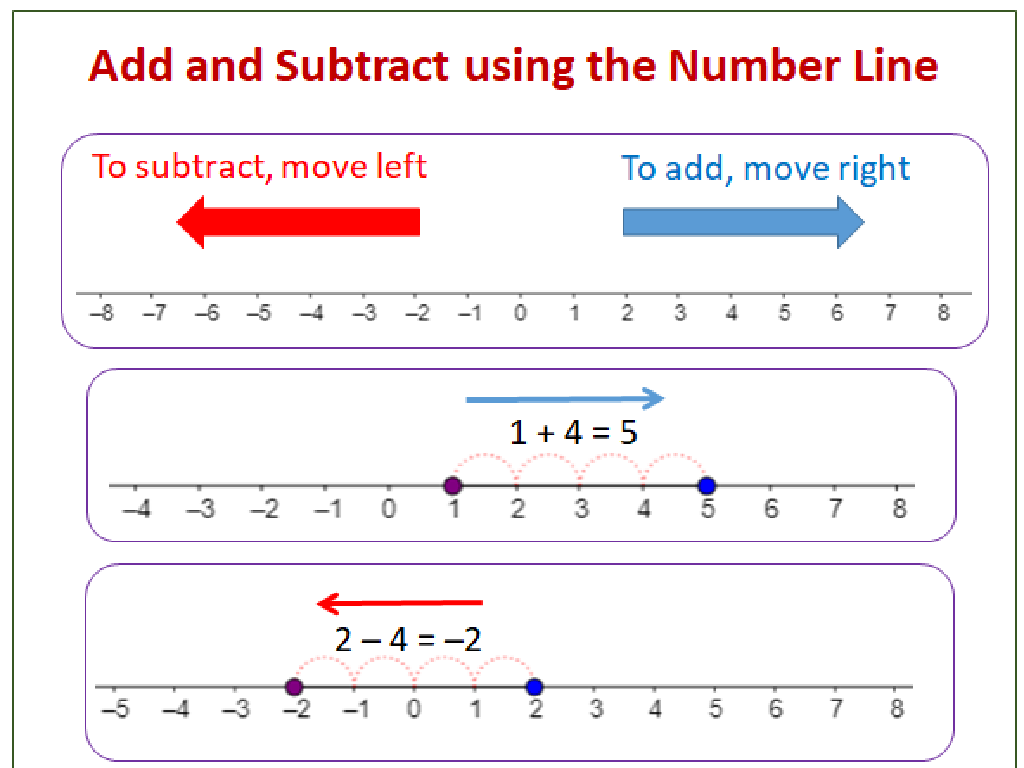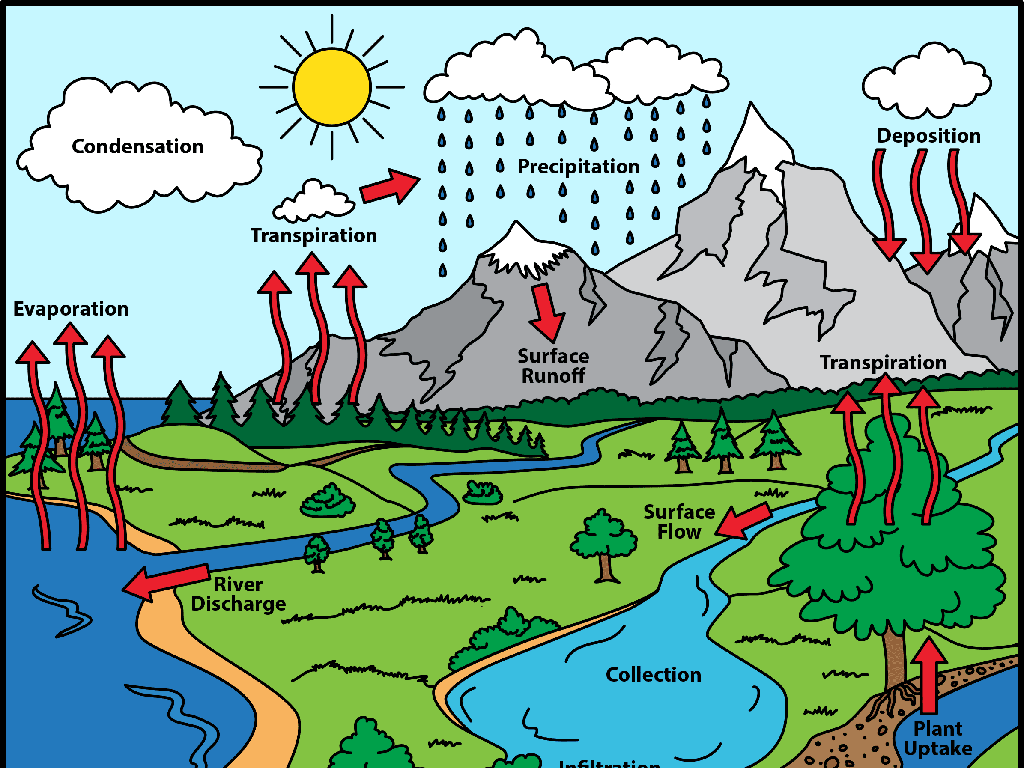Complete The Sentence With The Correct -Ild, -Ind, -Old, -Olt, Or -Ost Word
Subject: Language arts
Grade: Second grade
Topic: Short And Long Vowel Patterns
Please LOG IN to download the presentation. Access is available to registered users only.
View More Content
Vowel Patterns: -ild, -ind, -old, -olt, -ost
– Learn about vowels and their sounds
– Short vs. long vowel patterns
– Short vowels: ‘a’ as in ‘bat’, Long vowels: ‘a’ as in ‘cake’
– Practice with -ild, like ‘wild’
– ‘mild’, ‘child’, ‘wild’ have a long ‘i’ sound
– Find -ind, -old, -olt, -ost words
– ‘kind’, ‘cold’, ‘bolt’, ‘most’ are examples to look for
|
This slide introduces second graders to the concept of short and long vowel sounds, which is fundamental in understanding word pronunciation and spelling. Start by explaining what vowels are and the difference between short and long vowel sounds. Use examples to illustrate the patterns. Then, focus on words ending with -ild, -ind, -old, -olt, and -ost, which often have long vowel sounds. Encourage students to practice by identifying words with these patterns in their reading or in class activities. Provide guidance on how to differentiate between short and long vowel sounds in words and offer plenty of examples for each pattern. This will help students with reading fluency and word recognition.
Exploring Vowels: -ild, -ind, -old, -olt, -ost
– Vowels: Special alphabet letters
– Short vs. long vowel sounds
– Identify vowels together
A, E, I, O, U – let’s say them out loud!
– Practice with -ild, -ind, -old, -olt, -ost
Use patterns to complete words: ‘w__ld’, ‘f__nd’, ‘c__ld’, ‘b__lt’, ‘l__st’
|
This slide introduces the concept of vowels to second graders, emphasizing the difference between short and long vowel sounds. Start by explaining that vowels are special letters that help us form words. Engage the class by asking them to name the vowels. Then, transition to explaining the importance of vowel patterns in creating different sounds, using -ild, -ind, -old, -olt, and -ost as examples. Encourage the students to practice these patterns by filling in the blanks with the correct vowels to complete words. This activity will help them recognize and pronounce words with these common endings.
Short vs. Long Vowels
– Short vowels: quick sound
– Like ‘a’ in ‘cat’
– Long vowels: say their name
– Like ‘a’ in ‘cake’
– Listen to vowel sounds
– We’ll hear examples of each
– Practice with -ild, -ind, -old, -olt, -ost
– Use words like ‘wild’, ‘kind’, ‘cold’, ‘bolt’, ‘lost’
|
This slide introduces the concept of short and long vowel sounds to second graders, which is fundamental in understanding vowel patterns. Short vowels are brief and do not sound like the letter’s name, while long vowels do. Provide clear examples by saying words out loud and having the students repeat after you. This auditory exercise helps them differentiate the sounds. After listening, engage the students in a practice activity where they complete sentences using words with the -ild, -ind, -old, -olt, and -ost patterns. This reinforces their understanding of short and long vowels in a fun and interactive way.
Exploring Special Word Endings
– Special endings create unique sounds
– Focus on -ild, -ind, -old, -olt, -ost
– Like ‘wild’, ‘find’, ‘cold’, ‘bolt’, ‘lost’
– Endings affect vowel sounds
– The ‘o’ in ‘cold’ sounds different than in ‘cot’
– Practice with examples
|
This slide introduces students to the concept of special word endings and how they can alter the pronunciation of vowels within words. Emphasize the importance of recognizing these patterns to improve spelling and reading skills. Provide examples for each ending, such as ‘wild’, ‘find’, ‘cold’, ‘bolt’, and ‘lost’, and demonstrate how the vowel sound changes. Encourage students to listen and repeat the words to understand the different vowel sounds. Plan a class activity where students find additional words with these endings in their reading books or from a word list you provide. This will help reinforce the concept and allow for practice in a fun and interactive way.
Exploring -ild and -ind Patterns
– ‘i’ in -ild and -ind sounds like ‘eye’
– Examples: ‘wild’, ‘child’
– ‘wild’ as in not tame, ‘child’ as in a young person
– More examples: ‘kind’, ‘mind’
– ‘kind’ as in nice, ‘mind’ as in your thoughts
– We’ll read these words together
|
This slide introduces the -ild and -ind word patterns to second graders, emphasizing the long ‘i’ sound, pronounced like ‘eye’. Start by explaining the sound and then provide clear examples. Use ‘wild’ and ‘child’ to illustrate the -ild pattern, and ‘kind’ and ‘mind’ for the -ind pattern. Make sure to articulate the words clearly and encourage the students to repeat after you. This will help them recognize the pattern and apply it when they encounter new words. Engage the class by reading the words together, ensuring they understand the pronunciation and meaning of each example. This activity supports phonics and reading comprehension skills.
Exploring -old, -olt, and -ost Words
– The ‘o’ in -old, -olt, -ost
– Sometimes ‘o’ sounds like ‘oh’, sometimes not
– ‘Cold’ and ‘bolt’ have long ‘o’
– Like ‘snow’ in ‘cold’, ‘show’ in ‘bolt’
– ‘Lost’ has a unique ‘o’ sound
– ‘Lost’ ‘o’ sounds like ‘aw’ in ‘saw’
– Practice with different words
|
This slide introduces the vowel patterns -old, -olt, and -ost, focusing on the different sounds the letter ‘o’ can make in these patterns. Start by explaining that the ‘o’ can sound like a long ‘o’ as in ‘cold’ and ‘bolt’, or it can have a unique sound as in ‘lost’. It’s important to emphasize the difference in pronunciation through examples and encourage students to practice by identifying and reading aloud words with these patterns. You can make this interactive by having students come up with additional words that fit these patterns and discuss the ‘o’ sound in each. This will help them recognize and pronounce these patterns correctly in their reading.
Practice Time: Fill in the Blanks!
– Complete sentences with the right word
– Fill in the blank in each sentence
– Use the correct -ild, -ind, -old, -olt, or -ost
– For example, ‘The w___ blew the leaves away.’ Could it be ‘wind’?
– Listen to the vowel sounds carefully
– The vowel sound before the ending helps decide the correct word
|
This slide is an interactive activity for students to practice using the correct word endings -ild, -ind, -old, -olt, or -ost. Provide sentences with missing words and have students fill in the blanks with the appropriate word. Remind them to focus on the vowel sounds in the words to help determine the correct ending. For instance, in the sentence ‘The child found a g___ piece of paper,’ the word ‘gold’ fits because of the ‘o’ sound. Encourage students to say the sentences aloud to hear the vowel sound clearly. This exercise will help reinforce their understanding of short and long vowel patterns and how they influence word endings.
Let’s Play a Matching Game!
– Match word beginnings and endings
– Combine word starts like ‘w’ or ‘m’ with -ild, -ind, -old, -olt, or -ost
– Pronounce the full words aloud
– Practice saying words like ‘wild’, ‘mind’, ‘bold’, ‘bolt’, ‘lost’
– Pair up for the matching game
– Work with a classmate to find matches
– Have fun learning vowel patterns
|
This interactive activity is designed to help students understand short and long vowel patterns by matching word beginnings with the correct endings (-ild, -ind, -old, -olt, or -ost). Encourage students to say the words out loud to reinforce pronunciation and auditory recognition of vowel patterns. Working in pairs allows for collaborative learning and peer support. As a teacher, facilitate the activity by providing examples, assisting pairs that may struggle, and ensuring that the learning environment is engaging and supportive. Offer positive feedback and celebrate correct matches to build confidence.
Class Activity: Crafting Words with Special Endings
– Form groups for word creation
– Use blocks to make -ild, -ind, -old, -olt, -ost words
– Example: build, kind, cold, bolt, lost
– Share your group’s words with the class
– Discuss the vowel sounds in your words
– Notice the short or long vowel sounds before the endings
|
This interactive group activity is designed to help students understand short and long vowel patterns in words with specific endings (-ild, -ind, -old, -olt, -ost). Provide students with letter blocks to physically manipulate and form new words. Encourage creativity and teamwork as they explore different combinations. After groups have created their words, they will present them to the class, fostering public speaking and confidence. During the discussion, focus on the vowel sounds, emphasizing the difference between short and long vowels in the context of the words they’ve created. This will reinforce phonetic concepts and spelling patterns. Possible variations for different groups could include focusing on one specific ending, creating the longest word possible, or finding words in a category (e.g., animals, food).
Vowel Patterns: Homework Fun!
– Praise for today’s learning
– Homework: Find 5 special ending words
– Look for -ild, -ind, -old, -olt, -ost endings
– Use your favorite book for homework
– Choose a book you love to read
– Share your findings next class
|
This slide wraps up the lesson on vowel patterns and sets up the homework assignment. The homework is designed to reinforce the day’s learning by having students apply their knowledge to real-world reading. Encourage them to pick a book they enjoy and look for words with the -ild, -ind, -old, -olt, or -ost endings. Remind them to write down the words along with the sentence they found them in to share with the class. This will help them understand how these vowel patterns appear in everyday language. In the next class, create a collaborative environment where students can share and discuss the words they’ve discovered, fostering a love for reading and learning.

